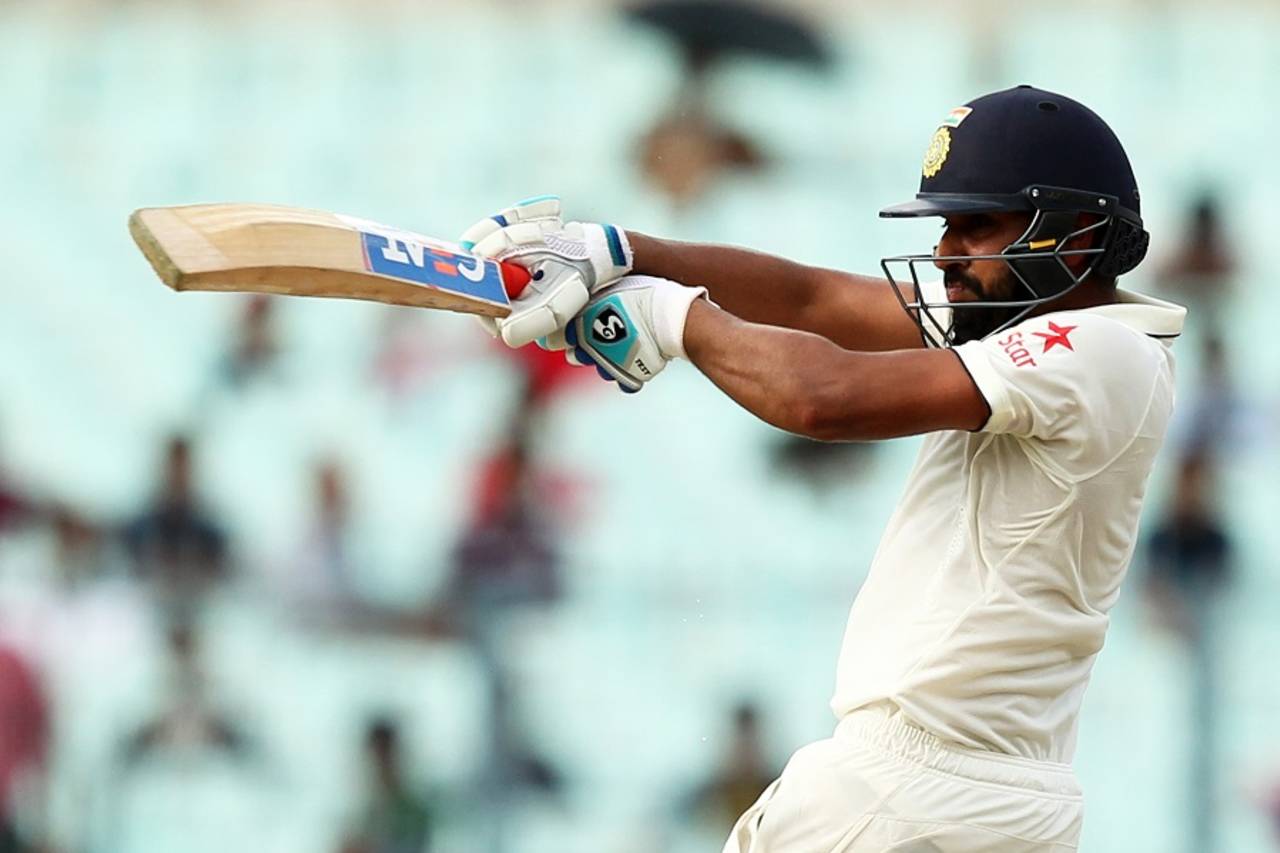It might be the worst of times to be an opening batsman in Test cricket, but it might just be the best of times for
Rohit Sharma to become one.
There hasn't been a
worse year than 2019 for Test-match openers in this millennium. Nope, even 2018 wasn't as bad.
M Vijay, Shikhar Dhawan and KL Rahul went through horror runs during India's recent run of away tours, and all three are now out of the Test squad. But in the two years leading up to all those tours, when India played most of their Test cricket at home, all three
performed spectacularly; Vijay scored hundreds for fun, Rahul ran up an incredible streak of 50-plus scores, and Dhawan rattled along at a strike rate of nearly 80 while averaging more than 50.
Rohit, therefore, couldn't have chosen a better place to begin life as a red-ball opening batsman.
And yet, and yet.
Rohit couldn't have chosen a tougher new-ball pair to begin life against as a red-ball opening batsman.
The bulk of Rohit vs Philander and/or Rabada has taken place in South Africa, of course, and conditions in Visakhapatnam, underfoot at least, won't be anything like Cape Town or Johannesburg. The overheads, however, might give the new-ball pair something to work with, with overcast skies and intermittent spells of rain expected on all five days. If the ball does swing, Rohit's technique will definitely be tested.
Which isn't to say that his technique can't stand up to the test. Over the course of India's four recent overseas tours - South Africa, England, Australia and the West Indies - Rohit (who, admittedly, only played in two of the tours) actually racked up a marginally better control percentage (82.52) than Virat Kohli (82.33).
But while he made fractionally fewer errors than Kohli, Rohit's errors were more damaging. Every tenth mistake, roughly, cost Rohit his wicket, while Kohli made 16.15 mistakes per dismissal. Of all of India's middle-order batsmen, Rohit's not-in-control-balls-per-dismissal figure (9.71) was the lowest. Only Vijay, Dhawan and Rahul - who as openers would be expected to face more outright wicket-taking balls in seaming conditions - did worse.
These numbers support the widely held idea of Rohit, the Test batsman - someone who looks like he belongs, and seldom struggles for fluency, but also someone whom bowlers don't necessarily view as an impregnable wall.
Part of this comes from a tendency to get out playing ambitious and often airborne shots; think of the dismissals to Moeen Ali in Southampton five years ago, or to Dane Piedt in Delhi in 2015, or to Nathan Lyon in Adelaide last year.
Part of it also comes from his technique, particularly the short front-foot stride that leaves him susceptible to the moving ball. The direct contrast here is with Kohli, who often stands outside his crease and from there takes a massive stride towards the good-length ball. It helps him cut down the width of the ball's movement, and it also helps him get his front pad outside the line of off stump, protecting him from lbw. It's definitely one of the factors behind his errors being less costly than those of most other batsmen.
Rohit's front-foot stride, however, puts him in line with the stumps and not too far in front of the crease, making him particularly vulnerable to the incoming ball.
Rabada trapped him in front twice when India toured South Africa last year; in Cape Town he did it with a clever change of angle, going wider on the crease, and in Centurion he got the ball to reverse back in. And it doesn't always need a bowler with Rabada's pace and quality; on the 2015 tour of Sri Lanka, Rohit was out lbw twice to Angelo Mathews.
You don't need a massive front-foot stride to be a top Test batsman, of course, as Cheteshwar Pujara has shown. What he does, and what Rohit doesn't always do, is meet the ball late, right under his eyes.
That sort of Test-match discipline, however, comes from building a Test-match rhythm, which comes from playing the format regularly. Rohit has never had this opportunity, and has, despite this, built a pretty good record. Actually, it's better than pretty good. Since the start of 2016, he averages 53.00. And yet, he's only played in
11 of India's 40 Tests.
Perhaps this is the crux of the Rohit Sharma situation. This is a batsman who would walk into most of the world's current Test-match middle orders, but can't find a spot in India's. At 32, a new opportunity has arrived, in a new role. Can this be the spark that turns his Test career around?
Karthik Krishnaswamy is a senior sub-editor at ESPNcricinfo
